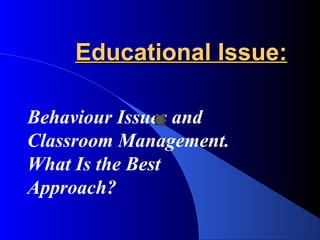The document discusses approaches to classroom behavior management. It compares autocratic, teacher-centered approaches to democratic, student-centered approaches. Autocratic approaches rely on obedience and punishment, while democratic approaches value student input and motivation. The document recommends preventative discipline strategies like clear rules, planning, and maximizing engagement through variation. It also stresses the importance of developing management strategies over time through routines, accountability, and respectful reflection on behavior.
























